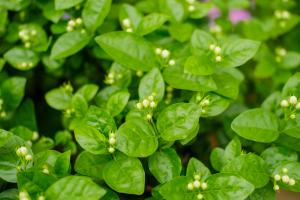Introduction
Planting coconut trees is simple and can be done by anyone with a little bit of knowledge and patience. With the arrival of new leaf, it's time to start considering planting new coconut trees to ensure a good harvest down the line. In this guide, we will cover how to plant coconut trees, including site selection, germinating, caring for seedlings, and planting techniques.
Site Selection
The first step in planting coconut trees is choosing the right location. Coconut palms thrive in tropical environments and require full sun, sandy soil, and good drainage. Ensure the spot you select will receive full sun for most of the day and has good airflow. Avoid low-lying locations that experience flooding or where stagnant water accumulates.
Germinating
Coconut trees can be grown from seed or seedlings. However, planting seedlings is a good option since it ensures that you'll get high-quality, disease-free trees. Germinate your seeds by soaking them in water for 2-3 days, changing the water every day. Plant the germinated seeds in a pot or a bed of sand, leaving about 2-3 inches of space between them. Keep the soil moist and wait for two to three months for the seedlings to sprout.
Caring for Seedlings
Once the seedlings have grown a few inches tall, they can be transplanted to the soil. Ensure that the soil is well-drained and moist, and use compost or manure to enrich nutrients. Maintain soil moisture by watering regularly, and make sure the soil drains well to avoid waterlogging. Protect the seedlings from pests and diseases by using insecticides and fungicides, respectively.
Planting Techniques
When the seedlings are about one to two years old, they are ready to be transplanted into their permanent location. Plant them in a hole that is deep enough to allow the roots to grow downwards. Leave a mound of soil around the base of the tree to avoid waterlogging. Water the tree immediately after planting, and keep it hydrated until it establishes itself. Once established, coconut trees require minimal care, occasional fertilization, and regular pruning
Conclusion
Planting coconut trees requires a bit of patience, but it's worth it when you get to enjoy the fresh coconuts. Remember to select the right site, prepare the seedlings appropriately, and take care of the plants. With the right techniques and care, your coconut trees are sure to thrive, and you'll soon be rewarded with a bountiful harvest.

 how many times do yo...
how many times do yo... how many planted tre...
how many planted tre... how many pine trees ...
how many pine trees ... how many pecan trees...
how many pecan trees... how many plants comp...
how many plants comp... how many plants can ...
how many plants can ... how many plants and ...
how many plants and ... how many pepper plan...
how many pepper plan...



























